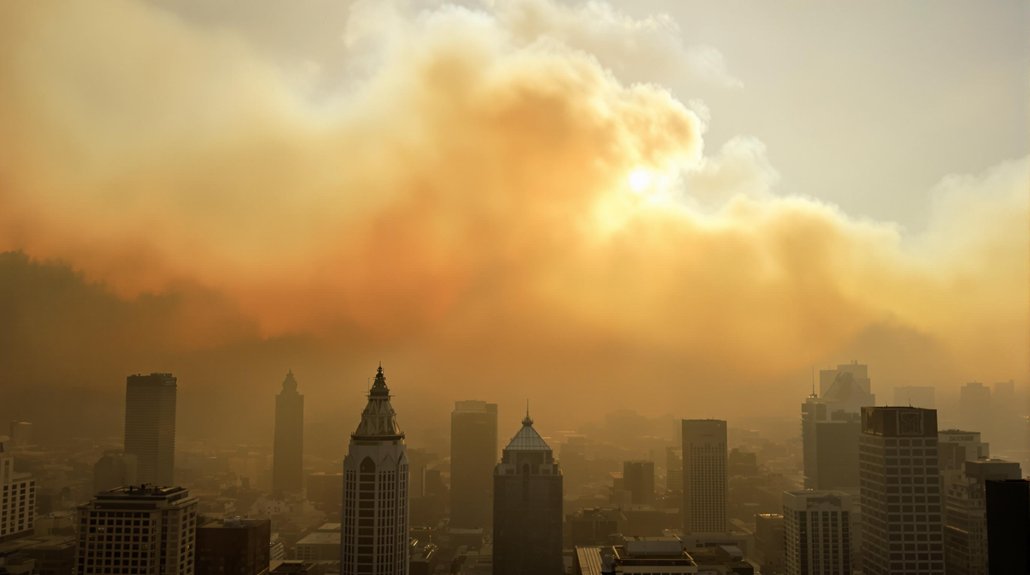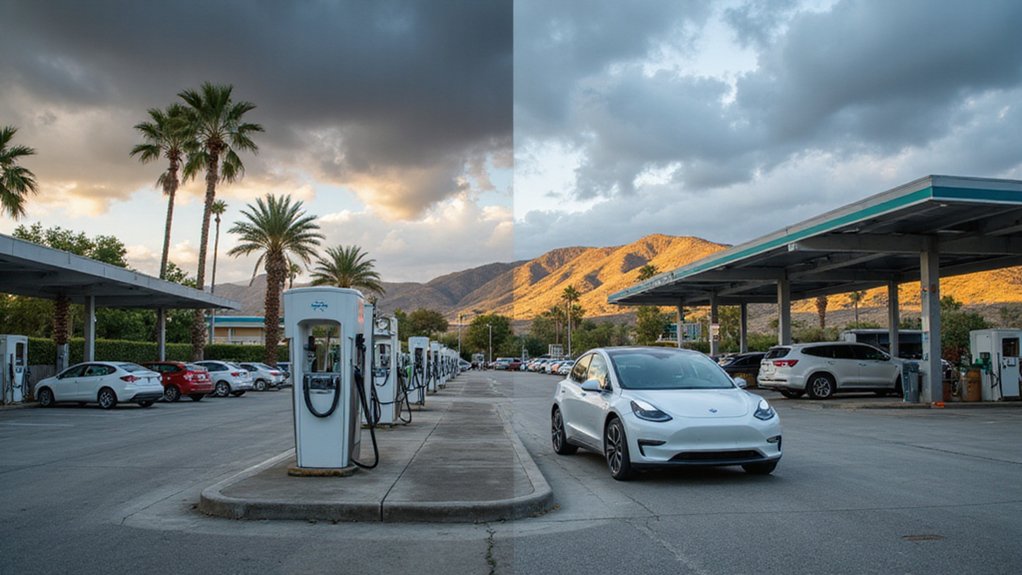Five major pollutants from wildfire smoke are markedly degrading air quality across the United States. Fine particulate matter (PM2.5), volatile organic compounds (VOCs), nitrogen oxides, carbon monoxide, and ozone-forming chemicals travel through the air, creating health hazards far from fire zones. These tiny particles, measuring less than 2.5 microns, can easily enter deep into people’s lungs.
Recent data shows wildfire smoke caused 25% of unhealthy ozone days in the U.S. from 2018 to 2023. Last year alone, there were over 1,200 “unhealthy” and 231 “very unhealthy” air quality days due to smoke. The problem isn’t just near the fires – smoke plumes can travel thousands of miles, affecting air quality in states that aren’t experiencing fires themselves.
The health effects are serious and widespread. When people breathe smoke-filled air, they face increased risks of asthma attacks, COPD flare-ups, and respiratory infections. Sensitive groups including children and older adults face even greater health risks when exposed to wildfire smoke. Even the general population can suffer premature death from high PM2.5 levels during major smoke events. Scientists have also found links to cardiac arrests and inflammation throughout the body. Research shows that exposure to wildfire smoke can lead to cognitive impairment and memory difficulties in affected populations.
Climate change is making the problem worse. Longer, more intense fire seasons, combined with drought conditions and high winds, increase both the frequency and severity of wildfires. The number of wildfire days and total acreage burned has climbed over the past decade. Even off-season wildfires are becoming more common. The health impacts of these wildfires disproportionately affect racial minorities who are more likely to live in areas with already compromised air quality.
The U.S. Clean Air Act sets standards for these pollutants. For example, PM2.5 shouldn’t exceed a daily average of 35 μg/m³, while ozone shouldn’t go above 0.070 ppm. During wildfire events, these levels are frequently exceeded, even in areas hundreds of miles downwind from the actual fires.
While regulatory exceptions may apply for these “exceptional events,” the health impacts remain. Smoke doesn’t recognize borders or regulations, creating air quality challenges that affect millions of Americans even when fires burn far away.
References
- https://www.climate.gov/news-features/feed/wildfire-smoke-impacted-air-quality-across-united-states-2018-2023
- https://pmc.ncbi.nlm.nih.gov/articles/PMC7932990/
- https://www.lung.org/blog/wildfire-smoke-air-impact
- https://www.who.int/health-topics/wildfires
- https://pmc.ncbi.nlm.nih.gov/articles/PMC5010409/








